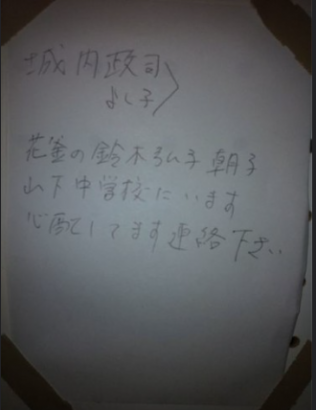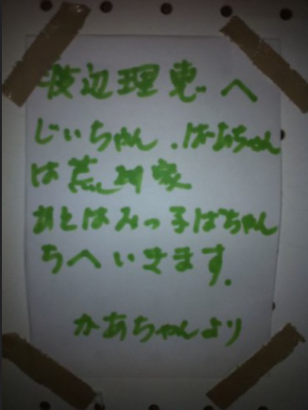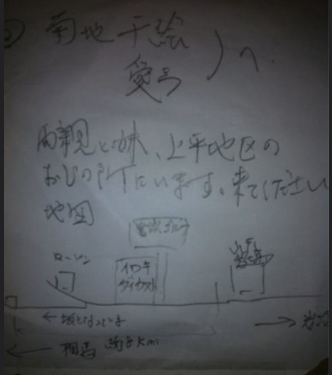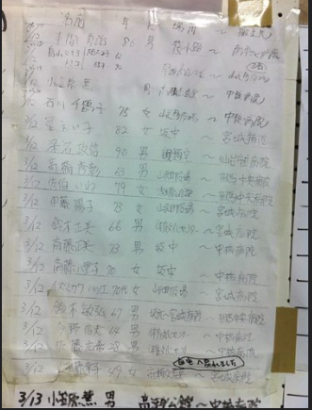THE R-CODE RESEARCH PROCESS
_________
RESEARCHING UNDERREPRESENTED COMMUNITIES: PRELIMINARY FINDINGS
The purpose of this project is to use social media to show the perspectives of underrepresented communities through the use of R and Twitter API. Twitter API allows the user to retrieve tweets for research. R is a coding language that is useful for statistics and it is more focused on data analysis. We are currently still in the process of this research project so these are only the preliminary findings. To effectively research voices of this disaster, we will be using the platform that was most used at that time, Twitter, although the most used platform currently is Facebook. The hashtag we will be focusing is #prayforthephilippines and any randomly picked tweet, of that time, that has the word Philippines.
I found it was extremely difficult to find people who were actually involved in the disaster. #prayforthephilippines is primarily people outside of the Philippines showing support or donations for victims of the Typhoon. The problem that I encountered while researching is that this hashtag did not focus on the victims of the Typhoon, instead a large majority of it included celebrities. Over 300 of these tweets @ celebrities, thanking them for their support or asking them for more support. The problem with this is celebrities are overshadowing the victims and the main cause they are supporting. Very few of these tweets were actually about the victims. Interestingly enough, 50 of the tweets were about Justin Bieber, while others were about Manny Pacquiao. Also, there is a portion of these tweets that had hashtag #storyofmylifefollowparty. This basically is a follow party where people were asking for followers. It seems as though there many individuals who are using the Typhoon to gain more followers. Seeing as though I was not going to get any voices from the disaster, I decided to use any randomly picked tweet, during that time, that included the word Philippines. Unfortunately, I faced the same thing as the first hashtag. Very few of these tweets were about the Typhoon. Over 470 of these tweets were about celebrities and only 7 of them were about the typhoon. The tweets of the typhoon were not even from victims, rather it was from broadcasters or people spreading awareness of the typhoon.
This project had a lot of trial and errors. It was difficult at first to start because Twitter denied my Twitter API application as I listed myself as an undergraduate. They have another program like Twitter API for undergraduates, but we needed the Twitter API for this project. Eventually, I had to use Dr. Quizon’s account, however, when Elon Musk took over, he shut down all of our accounts. It previously used to be free, but now, you have to pay $100 a month so I had to use the other student researcher’s account. Luckily, we have a grant, but $100 a month is not a very affordable price. This poses a problem because it makes it difficult for researchers to access, specifically those who do not have a fund. Another problem I had was that, it is extremely hard to find the voices of those who were in the disasters. I think a major problem that I had to encounter was the lack of representation during these times. It was frustrating to see people give more attention to celebrities that were donating instead of those who needed a platform to speak of their experiences during this natural disaster. I think this is a major problem in general as they are taking away the voices of the victims. Instead of giving a platform and a safe place for these underrepresented voices, many are giving the platform to celebrities that already have one. Throughout this research, I realize I need to find more hashtags that only Filipinos, who are in the disaster, would use. To improve this research, I think I will be focusing more on Tagalog hashtags, phrases, or Filipino companies. Hopefully in the future, we are able to give a platform for the unheard voices of disasters
_________
INSIGHTS INTO TYPHOON HAIYAN/YOLANDA THROUGH A PILOT STUDY OF TWITTER COMMUNITIES
Abstract of paper presented at the Petersheim Academic Exposition 2023
By Frances Maris Jasmine Lofranco
From November 3, 2013, to November 11, 2013, one of the most destructive and powerful typhoons hit multiple Southeast Asian countries, notably the Philippines. Typhoon Haiyan. known locally as Yolanda, was one of the most devastating tropical cyclones with over 6,000 people killed. Twelve years after destruction, what are the underrepresented and untold stories? To fully include understudied voices in disaster research on one of the biggest tropical cyclones in history, this paper presents a snapshot of a method seeking both onsite as well as expatriate community perspectives. This paper presents a pilot text mining study using R that is part of the Hidden Voices of Disaster interdisciplinary grant. As one of two student researchers on the team, we aim to explore ways of building a scholarly platform for studying underrepresented voices and help better evaluate how the world responded to this natural disaster, specifically on the one of the most used social media platforms of that time, Twitter. I will briefly present preliminary findings using community hashtags and share insights on the process specifically focusing on #prayforthephilippines.
_________
RESEARCH PRIOR TO THE PETERSHEIM PRESENTATION
As the grant is slowly starting to end, I wanted to make sure I was able to document my road to the Petersheim Presentation. Before we were able to present our research, we had to learn how to research. The code we were learning was R. Luckily, I had already taken a class for my Poli-Sci major and had a background, but it was a terribly difficult code. It is fun once you understand, but even with someone that had a background, it was difficult to research. This was the first time I ever really used the code for a big research project. I have used it to research, but I had limitations then. The possibilites were endless with this project.
Leading up to it, I tried to do as much work as possible. I decided to focus on the hastage #prayforthephilippines, which was one of the most trending tags of this time. It was able to give me the information I wanted, but I did have trouble inputting the data. Fortunately, I had Wes to help me. They lead me through the whole thing and was able to compile some data. After that, I made an abstract with Dr. Quizon and began my presentation
_________
JAPANESE DISASTER ARCHIVE – STARTING POINT FOR RESEARCH
by Wes Melian
May 2, 2022
We started our research by going through the Japanese Disaster Archive (JDA) as a way to get some bearing about the scope and themes we could explore. A bit of background on the JDA, it began as a project out of Harvard University’s Reischauer Institute of Japanese Studies. The point was to create an accessible digital archive where people could share and view information regarding disasters in Japan. The JDA collaborated with several different companies and teams to collect all the information. Users are able to create collections with the information they find through the JDA. The search bar of the JDA allows users to narrow down their search by type of content (images, audio, testimonial, etc.), date range, language (English or Japanese), and even by partner (ex. Yahoo! Japan, Asahi Times).
This filtering system doesn’t apply to the collections which can be organized by time posted and language. Most collections seem to have been made by students for classes both at the college, high school, and primary school levels. While the collections are useful to find threads within the JDA because so many of them were done for school projects there are not more than 10 things per collection. None of the collections seemed to be cultivated by the JDA itself either.
There is an interactive map that shows information via heat maps or content maps. Most content in the JDA also has a small map attached to it so users can see where the information is coming from. This is very useful in seeing how different regions were affected and what was being said where.
As helpful as the JDA is, it is not as streamlined as it could be. The interface is a bit clunky and finding and filtering content is difficult. When looking through testimonials there was an overwhelming amount of students talking about their experiences researching with the JDA and about what they learned. While not unimportant, there is no way to filter out the testimonials further by region, for example. Using the JDA is a lot of just wading through tons of information before finding a thread one can pull on and follow outside of the JDA. I ended up on the Asahi Times website and used their own search bar over the JDA’s to find information about the court cases following the March 11th disaster in Japan. It is not that the JDA isn’t useful, it is a good starting point, but there is so much information that is very easy to get overwhelmed.
_________
EXPLORING JDA – CROWD-SOURCED READING AND TRANSLATION OF HAND-WRTTEN NOTES ON MISSING LOVED ONES
by Ciana Vrtikapa
March 20, 2022
I did a wide search of the JDA in Japanese and found a variety of interesting things. Among these were a variety of critiques regarding a failure to protect women during the disaster. There were many articles making the invisible visible with links to other content detailing sexual violence in evacuation centers.
I also noticed that in the JDA, Twitter-Japan’s site filtered key words for the day of the disaster; many tweeted “there’s an earthquake” and nothing more. However, a few tweets led to blogs. One of these blogs has since been shut down but provided links to the author, Hiroki Iwuasa’s Flickr account. His account has dozens of photos including photos of handwritten message boards, lists of names, and information about the casualties.
In some of the pictures the handwriting can be difficult to read, but luckily other users typed out the written Japanese in the comments of the photos to help others who had trouble reading. I will provide a selection of the photos, comments, and translations from the account.
The pictures were shared by Hiroki Iwuasa, however in the caption of some of them he thanked @TEAM_JUA. It’s possible that they collaborated to spread information as widely as they could. @TEAM_JUA on Twitter has links to photos and information surrounding the disaster as well.
•
The name of the album is:
11 Mar 東北関東大震災(March 11th, The Great Tohoku Kanto Earthquake)
私たちは負けません!生き延びる!(We won’t lose! We will survive!)
The photos are from Yamamoto Town Hall in Watari District, Miyagi Prefecture.
There are three prevalent categories of information shared. Category one is logistic information. There are pictures of a bus schedule (1) as well as a list of multiple evacuation shelters (2).

(2) Evacuation Shelters

(1) Bus Schedule
There’s also detailed information on the local schools.

The Japanese was rewritten in the comments by Norihiro Sawada.
“町内小学校情報
3/13
坂元小学校 全員無事
中浜小学校 全員無事
山下小学校 全員無事
山下第一小学校 全員無事
山下第二小学校 6人連絡なし 2人不明
坂元中学校 4人不明
山下中学校 27人連絡なし 6人不明”
This paper is sharing the status of elementary and junior high schools in the town. The first four listed are Sakamoto ESH, Nakahama ESH, Yamashita ESH, and Yamashita Daiichi JHS. Their status is marked as “everyone is safe”.
The fifth school, Yamashita Daini JHS notes that six students have not been contacted, and there are two with an unknown status.
The sixth school, Sakamoto JHS, has listed that the status of four students is unknown.
The seventh school, Yamashita JHS, notes that 27 students have not been contacted and there are six with an unknown status.
Below this picture, @ninoguchi commented:
“「山下第一小学校 全員無事」=大学時代からの友人の娘さんお二人が無事なようで安心しました。情報有難うございます。”
“「Yamashita Daini JHS, everyone is safe」= I am relieved that the two daughters of my friend, who I have known since university, are safe. Thank you for the information.”
•
The second category of information is the status of individuals. There were dozens of notes detailing where people were, where they were going, if they were okay, and asking for their loved ones to contact them.

The Japanese was rewritten in the comments by Norihiro Sawada.
福島市 在庭坂 “Fukushima City Zainiwasaka
阿部竹之助 Abe Takenosuke
3月14日に来ました On 3/14 at 12:58pm, I was here.
12時58分 I will go to the elementary
これから小学校に行きます school now.”

The Japanese was rewritten in the comments by Norihiro Sawada.
城内政司 よし子 “Kiuchi Masahi, Yoshiko
花釜の鈴木弘子、朝子 Hiroko Suzuki and Asako of Hanagama
山下中学校にいます。 At Yamashita JHS.
心配してます。連絡下さい。 I’m worried. Please contact me.”

The Japanese was rewritten in the comments by @HachinoH.
グループホーム “Group Home
さかもと入居者は Sakamoto Residents
全員 坂元中学校に are all evacuating to
避難しています。 Sakamoto JHS.
グルー – Guruu”

The Japanese was rewritten in the comments by Norihiro Sawada.
渡辺理恵へ To Rei Watanabe,
じいちゃん、ばあちゃんは荒川家 Grandpa and Grandma are at the Arakawa house.
あとは、みつ子ばちゃんちへいきます。 Later we will go to Grandma (possibly Aunt) Mitsuko’s
house.
かあちゃんより From, Mom”

The Japanese was rewritten and the map recreated in the comments by Norihiro Sawada.
菊地千絵、愛弓へ
両親と妹、上平地区の
おじの所にいます。来てください。
地図 |宮城ゴルフ|
イワキダイカスト
目的地 \□ ローソン |ーー|| 山元役場
■ \ | || □
——————————————————————-
←坂となっている(役場付近から約8km)
To Kikuchi Chie, Ayumi,
My parents and little sister are at my uncle’s house in the Kamihira area. Please come.
Map: |Miyagi Golf|
Iwaki Die Cast
Destination \□ Lawson |ーー|| Yamamoto Town Hall
■ \ | || □
——————————————————————-
←There’s a slope(From town hall it’s about 8km)
Besides these more personal handwritten messages targeted towards specific people, there were also lists providing information on multiple individuals. The following two photos are lists with the following information from left to right.
Date -> Name -> Gender -> Age -> Location


•
The third category of pictures provides information on missing people and casualties.
This casualty list displays the following information from left to right:
Name -> Head of Household -> Area -> Identification Date -> Death Date -> Birthday -> Age -> Address


(Names and personal information has been cropped out of the picture.)
The majority of the other casualty lists display the same information. The documents regarding missing people exclude information such as head of household, identification date, and death date. However, they all include name, age, gender, and address.
•

The safety information board at Yamamoto Town Hall.
During the day of and the days following the disaster, it seems that information was passed along within the community through public announcements at the town hall and information boards as neighbors leaned on each other for support. However, for people outside of the community, pictures like these were spread on Twitter and blogs alongside information for aid and assistance.
_________
THE LIVED EXPERIENCE OF NATURAL DISASTERS: AN ACCOUNT FROM A HIGH SCHOOL STUDENT
by Wes Melian
July 14, 2022
While looking through the JDA Archive (read the blog post above for more information regarding that), I found a really interesting testimonial titled “I am not a Martyr, Refugee, or Victim” wherein a student recounts his experience during the Tohuku Earthquake. He explains how when the earthquake began it was the adults, not the students who were the most panicked. For the unnamed student and his cohorts, the earthquake was a semi-regular occurrence that was not a cause for concern. He explains that the bus ride back to their homes after several hours of being holed up at their school took seven hours. In those seven hours, his friend and he started a band, broke up, and he decided to go solo. When he did finally get home and was rejoined with his family, they ordered pizza. It was only when eating said pizza and watching the news did the student realize the magnitude of what had just happened. His last statement is as follows: “Pizza turns to ash in my mouth as death further North renders these moments embarrassingly insignificant.”
This account is fascinating because it shows how mundane this devastating earthquake was to this student and how the impact was not realized till much later. It brings to mind the idea that most of us are going about our daily lives during world-altering events. Unless we live at the event’s epicenter until the news and the devastation is brought to our attention, just another day. If you were to look at the journals of young people (ie. children and teenagers) during events such as the 2011 Tohoku earthquake, most of them would probably recount their day at school, a feud with friends, or how much they like their crush. There is a juxtaposition between the mundane of everyday school life and a natural disaster that suddenly renders everything into sharp relief and petty squabbles now feel inane. The last line of the student’s testimonial really hammers this last point home.
Going forward, I’m hoping to read more first-hand testimonials of younger people who experienced the earthquake.
_________
TEPCO TRIALS AND THE LEGALITY OF BLAME
by Wes Melian
June 14, 2022
Asahi Shimbun is a Japanese newspaper that publishes its articles in both English and Japanese. In the wake of the 2011 Tohuku Earthquake, the newspaper published several articles following the trials between TEPCO and the victims of the nuclear power plant meltdown in Fukushima. TEPCO was the power company in charge of the nuclear plant and in the wake of the disaster, the high courts in Japan decided the fault lay with both the government and the company. However, the effects of the disaster and the money given to the victims were not enough. Even those who were rehoused by the government would end up being sued for not being able to pay rent when many of them could not even work. In more recent articles dated around 2019, the TEPCO executives who had originally been found guilty were looking for an acquittal. Even though the blame lies with them and their mismanagement of the plant, they still looked for a way to shift the blame onto someone else. It is also interesting to see how the Japanese government seem to, at first, be on the side of the victims but as time went on the support shifted toward TEPCO.
I would like to read the court documents for the trial of the TEPCO executives and do more research into Japanese law. I think it is really interesting to see who the government blames, how it is dealt with, and the repercussions of these choices. Japan is known for its strict legal system so comparing this with, for example, the Philipino government could be an interesting study in law.
